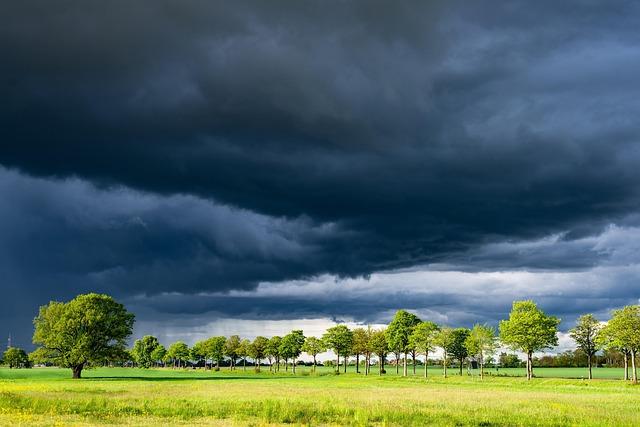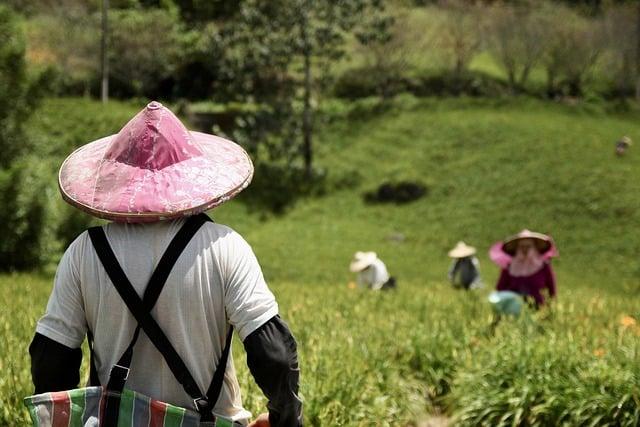Within the middle of southern Africa, Malawi unearths itself at the frontline of an escalating disaster pushed by way of local weather trade and excessive climate patterns. The rustic, recognized for its wealthy agricultural traditions, is grappling with the devastating penalties of chronic droughts that threaten meals safety and the livelihoods of its farming communities.On this context, an rising narrative unfolds in two contrasting villages: person who succumbs to melancholy and every other that embodies resilience and innovation. The International Meals Program (WFP) just lately highlighted the tales from those villages, showcasing how adaptable farming practices and network cohesion can function a beacon of hope amid dire cases. As drought prerequisites accentuate and starvation looms greater, the studies of those farmers be offering precious insights now not just for Malawi however for areas all over the world dealing with identical threats. Via their struggles and triumphs, we will be able to glean crucial classes on sustainability, adaptation, and the pressing want for collective motion within the face of an unsure agricultural long run.
Affects of Drought on Agricultural Communities in Malawi
The continuing drought in Malawi has exacerbated the demanding situations confronted by way of agricultural communities, considerably affecting each crop yields and meals safety. Farmers within the country, depending closely on rain-fed agriculture, have noticed dramatic decreases in harvests as erratic climate patterns disrupt the planting and rising seasons. The shortage of water has ended in reduced soil moisture,hampering the power to domesticate staple plants similar to maize and cassava. This has spurred emerging ranges of meals lack of confidence, forcing households to undertake non permanent coping methods, incessantly sufficient on the expense of long-term sustainability.
cutting edge approaches and network resilience are rising as key methods to fight the antagonistic results of drought. In some villages, farmers have begun to put into effect conservation agriculture tactics, which make stronger soil well being and support water retention. Moreover, there’s a rising curiosity in drought-resistant crop types, which empower farmers to conform to moving climatic prerequisites. In spite of the existing hardships, those communities reveal outstanding ingenuity and cohesion, fostering native beef up teams that proportion wisdom and sources, an important for navigating the hurdles introduced by way of lowered rainfall.The next desk outlines the main affects of drought on agricultural practices in two contrasting villages in Malawi:
| Affect | Village A | Village B |
|---|---|---|
| Crop Yield Decline | 70% lower | 50% lower |
| Meals Lack of confidence Stage | Top | Reasonable |
| Adoption of New Tactics | Restricted consciousness | Rising curiosity |
| Neighborhood Fortify Tasks | None | Lively teams |
Resilience Methods: How Two Villages are Adapting to Local weather Demanding situations

The affects of local weather trade are acutely felt in Malawi, pushing communities to innovate and adapt within the face of escalating drought prerequisites. In Chigumula and phalombe, native farmers have carried out efficient resilience methods that function a fashion for sustainable adaptation. Those methods come with:
- Crop Diversification: Farmers are moving from conventional monoculture to quite a lot of drought-resistant plants, which now not handiest is helping in keeping up soil fertility but in addition complements meals safety.
- Water Conservation tactics: Cutting edge strategies similar to rainwater harvesting and the development of small ponds are being applied to verify sustainable water provide all over the dry seasons.
- Neighborhood Coaching Methods: Native organizations are facilitating workshops on sustainable agricultural practices and soil control, strengthening the network’s wisdom base.
Along with those methods, collaborative efforts amongst farmers have fostered a way of solidarity and shared accountability.Common conferences supply an area for wisdom change and making plans for long run demanding situations. highlighted underneath is an easy evaluation in their methods:
| Technique | Advantages |
|---|---|
| Crop Diversification | Larger resilience and source of revenue steadiness |
| Water Conservation | Advanced crop yields all over drought |
| Neighborhood Coaching | Enhanced agricultural wisdom and abilities |
Voices of Farmers: Insights from the Center of Malawi’s Meals Disaster

In two contrasting villages of Malawi, the struggles of farmers remove darkness from the tough realities imposed by way of relentless drought. In Chikhwawa, farmers hotel to conventional tactics handed down thru generations, depending on native wisdom to conform to moving climate patterns. Concurrently going on, within the Kasungu district, cutting edge approaches similar to drought-resistant plants and sustainable irrigation tactics are being carried out, showcasing resilience and creativity. This juxtaposition finds a crucial figuring out: whilst some areas combat in opposition to the tide, others are pioneering pathways to sustainable agriculture.
Voices from the sector underscore the pressing want for intervention and beef up. Farmers in each villages specific a collective hope for get admission to to higher seed types, inexpensive fertilizers, and academic methods that target local weather adaptation. The next desk summarizes key insights accumulated from interviews with native farmers:
| Village | Commonplace Demanding situations | Proposed Answers |
|---|---|---|
| chikhwawa |
|
|
| Kasungu |
|
|

Within the combat in opposition to starvation, the International Meals Programme (WFP) stands at the leading edge, imposing cutting edge answers designed to achieve probably the most prone populations. In Malawi, the place the results of drought have intensified meals lack of confidence, the WFP is not just addressing instant wishes but in addition fostering resilience amongst native farmers. By way of introducing sustainable agricultural practices and offering get admission to to crucial sources, the group empowers communities to conform to converting local weather prerequisites. Some of the methods being hired are:
- Coaching on drought-resistant plants: Farmers are trained on types that may thrive in spite of restricted water availability.
- Soil conservation tactics: Enforcing tips on how to make stronger soil well being reduces erosion and improves yield.
- Water control methods: Environment friendly irrigation practices make certain that water is used properly, maximizing agricultural output.
This multifaceted manner now not handiest seeks to mitigate the present starvation disaster but in addition promotes long-term sustainability and self-sufficiency inside of those communities.Moreover, the WFP’s dedication to collaboration with native governments and NGOs strengthens the affect of its tasks. As an example the effectiveness of those initiatives, the next desk summarizes key results from contemporary interventions:
| Intervention | End result |
|---|---|
| Coaching periods held | 500+ farmers skilled |
| Larger crop yield | Moderate build up of 30% |
| New irrigation methods | 5,000 hectares progressed |
Cutting edge Answers for Long term Meals Safety in Inclined Areas

Within the middle of Malawi, two villages illustrate the stark distinction between conventional farming strategies and cutting edge agricultural practices within the face of critical drought. As local weather trade continues to exacerbate climate extremes, farmers are adapting by way of imposing new tactics that now not handiest build up resilience but in addition make stronger meals safety. This shift contains the adoption of drought-resistant seed types, rainwater harvesting, and crop diversification, enabling communities to resist erratic climate patterns and in the long run scale back starvation.
Key avid gamers on this transformation come with native cooperatives that supply farmers with crucial sources and coaching. The mixing of sustainable practices is an important for long-term good fortune, as those farmers additionally learn how to make the most of natural fertilizers and pest management strategies.The next desk highlights the cutting edge practices these days being followed in those villages:
| Apply | Description | Receive advantages |
|---|---|---|
| Drought-Resistant Seeds | Seeds engineered to thrive in low-water prerequisites. | Upper yields all over drought sessions. |
| Rainwater Harvesting | Tactics to seize and retailer rainwater. | Advanced water availability for plants. |
| Crop diversification | Rising more than one kinds of plants. | Reduces threat of overall crop failure. |
| Natural Fertilizers | Herbal ingredients used to counterpoint soil. | Complements soil well being and decreases chemical dependency. |
Suggestions for Policymakers: Improving Fortify for At-risk Farmers

Policymakers should prioritize the original demanding situations dealing with at-risk farmers, particularly in areas grappling with the antagonistic results of local weather trade and erratic climate patterns. Enforcing adaptive agricultural practices is significant. This contains investment for analysis into drought-resistant crop types and selling tactics similar to agroforestry. Additionally, setting up community-based irrigation methods can make stronger water control and make certain that farmers can care for productiveness all over dry spells. Such measures must be strengthened by way of sharply centered coaching methods that equip farmers with the talents to conform to moving climatic prerequisites.
Moreover, get admission to to monetary sources is paramount.Policymakers must leverage partnerships with monetary establishments to create low-interest mortgage methods in particular adapted for farmers in prone spaces, permitting them to spend money on resilience-building measures. Moreover, bettering infrastructure for market access is very important in making sure farmers can promote their produce with out considerable losses. Collaboration with native organizations and NGOs can facilitate wisdom sharing and useful resource distribution, aligning efforts to beef up the rural sector in opposition to long run adversities. The desk underneath highlights attainable interventions and their affects on at-risk farmers:
| Intervention | Anticipated Affect |
|---|---|
| Drought-resistant plants | Larger yield steadiness |
| Neighborhood irrigation methods | Advanced water control |
| Low-interest mortgage methods | Enhanced monetary safety |
| Marketplace get admission to enhancements | Diminished post-harvest losses |
| Agroforestry coaching | Enhanced soil well being |
The Conclusion
the contrasting studies of the 2 villages in Malawi underscore the pressing demanding situations posed by way of local weather trade and protracted drought prerequisites. Via their resilience and adaptive farming practices, the farmers featured on this article illustrate each the urgency of the present humanitarian disaster and the prospective pathways towards sustainable answers. Because the International Meals Programme continues its efforts to beef up prone communities, it’s certainly crucial that their tales tell world discourse on meals safety and local weather resilience. The interconnectedness in their struggles and successes serves as a poignant reminder of the significance of collaboration and innovation in addressing the escalating affects of drought and starvation. The way forward for many rests now not handiest on instant help however on long-term methods that empower native communities to thrive even within the face of adversity.
Source link : https://afric.news/2025/02/26/tale-of-two-villages-in-malawi-farmers-point-the-way-as-drought-drives-hunger-wfp/
Writer : Olivia Williams
Post date : 2025-02-26 04:17:00
Copyright for syndicated content material belongs to the connected Source.



